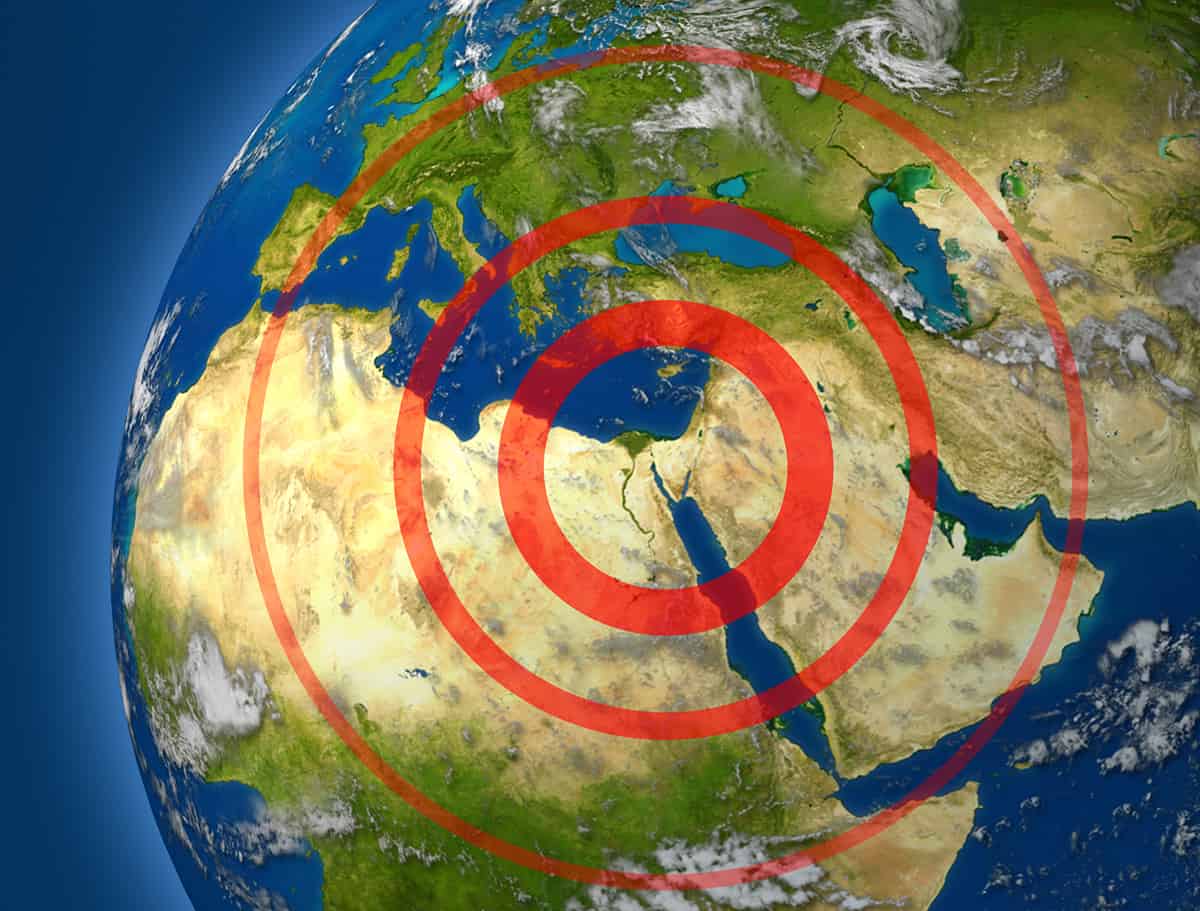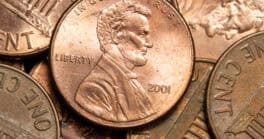Despite many unexpected obstacles in the past year, economic growth in the Middle East and North Africa region continued.
The war between Israel and Hamas in Gaza triggered a global shock wave in October 2023. Neighboring Egypt, Lebanon and Jordan are grappling with both military and humanitarian challenges. Attacks in the Red Sea by Yemen’s Houthis, a rebel group backed by Iran, cut traffic through the Suez Canal in half. This put Arab hydrocarbon producers, accounting for 35% and 14% of world oil and gas exports, on high alert.
So far, financial markets have remained relatively stable, with no major capital or investor outflows, reports the International Monetary Fund (IMF) in its 2024 MENA outlook published in January. But “the outlook … is highly uncertain, and downside risks are resurgent. An escalation or spread of the conflict beyond Gaza as well as the intensification of the disruptions in the Red Sea could have a severe economic impact,” the IMF states.
Despite profound geopolitical uncertainties, MENA growth is expected to increase from 2% in 2023 to 2.9% this year, outpacing Europe and the Americas. The region could have performed even stronger had OPEC+ countries not agreed on production cuts in late 2023. The Gulf Cooperation Council (GCC), a key driver of MENA growth, took the biggest hit with tepid 0.5% growth in 2023. Saudi Arabia, which accounted for 55% of the voluntary production cuts, hit a -1.1% recession but should pick up to near 3% this year.
Non-oil growth is also robust, especially in the GCC, suggesting that economic diversification strategies implemented about a decade ago are starting to pay off. Inflation was still 16.5% in 2023 but should decline this year on the back of tight monetary policies in most countries.
Banks Thriving
The focus remains on the region’s growing banking sector, largely dominated by GCC lenders, followed by Egypt and Morocco. In the first half of 2023, MENA banks recorded a year-over-year increase of 30% in net profits, 18% in operating income, 12% in net assets and 6% in returns on equity, reports international consulting firm EY.
In December, Fitch gave Middle Eastern banks a neutral outlook, “reflecting overall solid economic conditions.” The agency highlighted sound profitability, solid liquidity, stable asset quality, adequate capital buffers and prospects for credit growth.
Over the past few years, governments around the region have put the financial sector at the top of their agendas for economic diversification. With significant reforms, investments and consolidation strategies, Arab banks are now bigger, more cost-effective and ready to compete with world industry leaders.
In 2023, two MENA lenders made it in Standard & Poor’s top 100 world banks by assets. Country champions like UAE’s biggest bank, FAB; Saudi Arabia’s SNB; and Morocco’s Attijariwafa are developing quickly and scaling their footprint across the Middle East, Asia, Europe and Africa through mergers and acquisitions. A prime example is Kuwait Finance House. After buying Bahrain’s Ahli United late 2022, KFH is now the world’s second-largest Islamic bank.
Fintech, Open Banking And AI
Over the past decade, fintech has thrived in the MENA region, defying global economic slowdowns, major valuation drops and broader crises within the tech sector.
“Fintech has remained a sought-after sector for investors in the MENA region due to its resilience and growth potential, even amid economic downturns. It has continued to rank as the most funded and transacted sector in the region over the past several years,” comments Philip Bahoshy, CEO of Magnitt, a regional startup data platform that recorded investments of $1.3 billion in the sector last year.
Local fintech companies have exhibited consistent growth, a feat owed in part to their symbiotic relationship with established banks, particularly those in the GCC. Noteworthy among the 2023 megadeals were payment platform Tamara’s $340 million Series C funding round, as well as Tabby’s $250 million Series D and $700 million in debt financing from JPMorgan. Saudi Arabia’s “buy now, pay later” Tamara platform is the region’s latest fintech unicorn, with a $1.5 billion valuation, and has announced plans for an initial public offering. In Egypt, MNT Halan also joined the ranks of billion-dollar valuations in February 2023, securing $260 million in equity and $140 million in securitization bond issuance.
Saudi Arabia emerged as the epicenter of tech activity in the region, attracting the lion’s share of investments in 2023. Total funding for Saudi Arabia startups (not just fintechs) soared to $2.3 billion, distributed across 145 deals, over half of the region’s $4 billion total funding and a 160% year-on-year increase, reports research network Wamda.
And regional competition is still ramping up. In February, the Qatar Investment Authority, Doha’s sovereign fund, announced a $1 billion fund-of-funds to help entrepreneurs grow beyond seed funding, “enabling them to scale operations and expand market presence in Qatar, across the GCC, and ultimately onto the international stage,” said the QIA’s CEO, Mansoor Ebrahim Al-Mahmoud, at the launch event.
In their drive to become leaders in innovative finance, Arab countries are keen to adopt open banking and artificial intelligence (AI), two technologies that are about to take synergies between traditional lenders and fintechs to a whole new level and potentially change global transactions altogether. Data-sharing between banks and third-party providers through application program interfaces (APIs) is expected to grow 25% annually to reach $1.1 billion in 2027, reports the Arab Monetary fund in its latest publication.
Bahrain, Saudi Arabia, the UAE and Jordan are leading the way and should soon be followed by Oman, Kuwait, Egypt, Morocco and Tunisia. Central banks are helping drive regulation, data protection and system interoperability. For now, customer adoption is still in the very early stages but opportunities abound, with tech ready to help close the financial inclusion gap. According to consulting firm PwC, AI could bring an astonishing $320 billion additional revenue to the region by 2030.
The Arab World’s Take On Energy Transition
The other hot topic is climate. In the MENA region, greenhouse gas emissions have tripled since the 1990s, and temperatures are rising twice as fast as anywhere else in the world. Water scarcity, desertification and other natural disasters are felt by hundreds of millions of people every year.
In a region that recently hosted two UN climate conferences and is home to some of the world’s biggest fossil fuel producers—including Saudi Arabia, Iraq, Algeria, Egypt, Qatar, Kuwait, Libya and the UAE—the thorny issue of the future of hydrocarbons is on everyone’s mind. After excruciating debates between almost 200 countries, a commitment to transition away from oil and gas and to “achieve net-zero by 2050” was the key takeaway from COP28 in December, providing insight into how the energy transition is going to be tackled in the Middle East.
Petrostates will continue pumping oil and gas—some will even ramp up production—but they will try to so do in a cleaner way by reducing methane emissions or developing carbon capture and storage tools, for instance. The other promise is to invest heavily in renewable energies, especially solar-, wind- and hydrogen-powered plants.
All of that will cost tremendous amounts. And while Gulf states have deep pockets, most other Arab countries are struggling. Another fundamental lesson from COP28 was that banks will have to be at the center of talks if climate finance is to have any impact on the ground.
While countries establish national strategies and policymakers adapt regulation, banks must redefine the way they lend and invest. Most lenders in the region are already on board with the idea of green finance and have their own strategies to support energy transition. But more needs to be done to further develop financial instruments like green bonds or carbon markets that will be key in engaging private sector.
The ultimate goal should be banking for decarbonization or, as the United Nations puts it, aiming to significantly reduce carbon footprints in both operations and portfolios. For now, only 16 Arab banks have signed the UN’s Principles for Responsible Banking, and just three have joined the UN’s Net-Zero Banking alliance to become carbon neutral by 2050.
“Action by banks on climate mitigation is limited to a small but increasing number of banks, which are proactively looking to develop their carbon accounting and emissions reporting capabilities,” comments the UN in its 2023 report. “But most banks have not taken any steps to set targets.”
Looking ahead, prospects are positive for the MENA region’s financial sector. But the road is paved with challenges that stakeholders must factor in, such as the aftermath of devastating wars, fast-developing technologies and disruptions like temperature increases. Another force shaping the region is demographics, with a rapidly growing, tech-savvy, young population and waves of unbanked refugees.
| MENA Biggest Fintech Funding Rounds In 2023 | |||
|---|---|---|---|
| Country | Company | Sector | Amount raised in equity financing |
| Saudi Arabia | Tamara | Buy now, pay later | $340 million |
| Egypt | MNT Halan | Lending and payments | $260 million |
| Saudi Arabia | Tabby | Buy now, pay later | $250 million |
| Morocco | CashPlus | Money transfer | $60 million |
| Bahrain | Tarabut Gateway | Open banking | $32 million |




